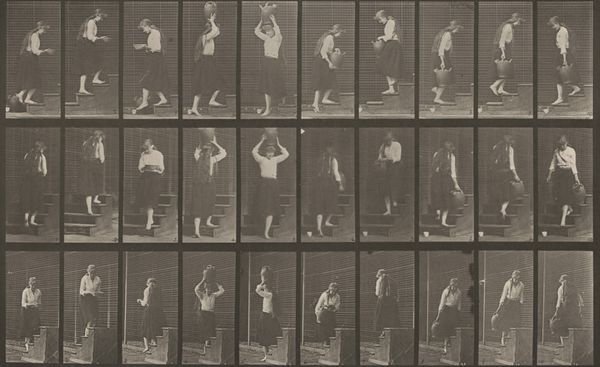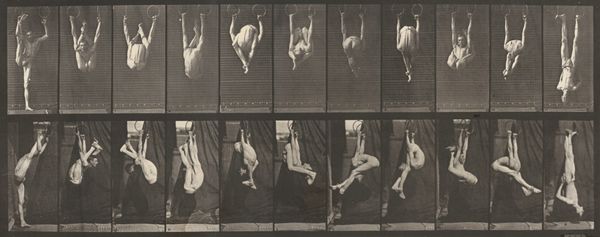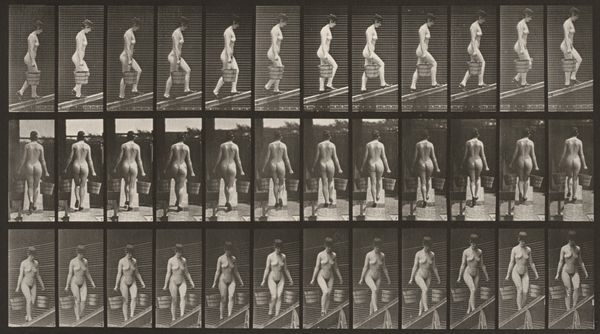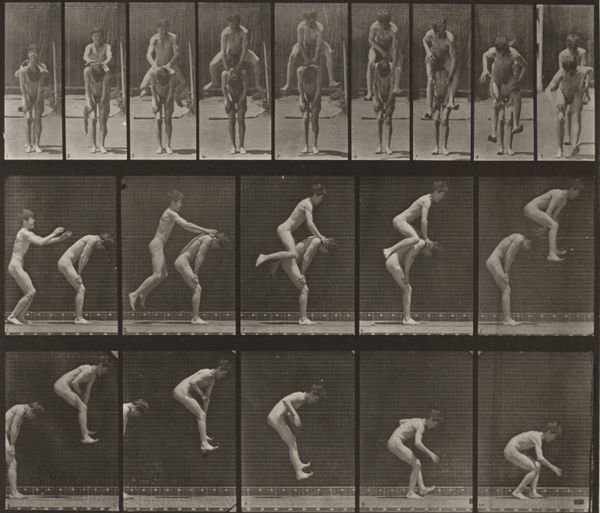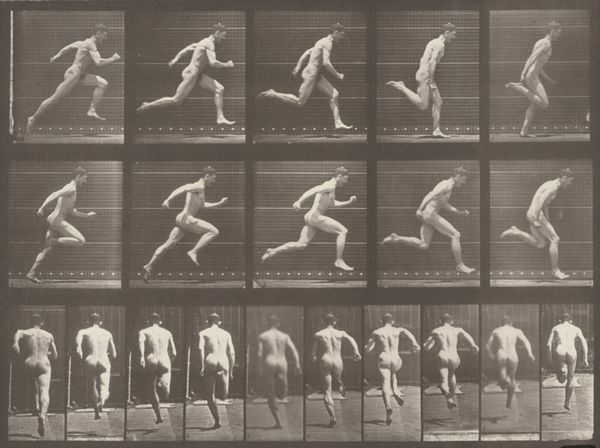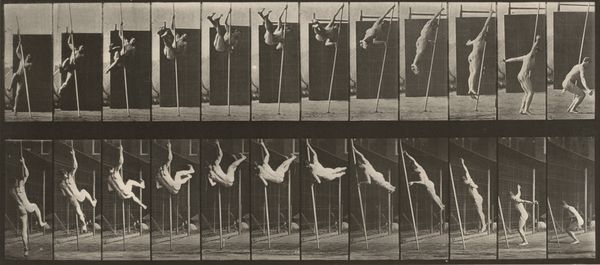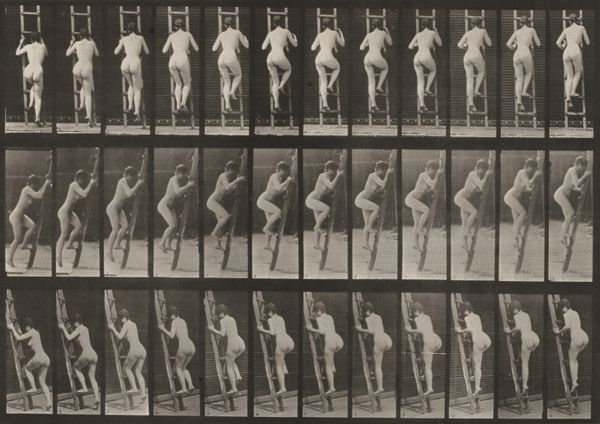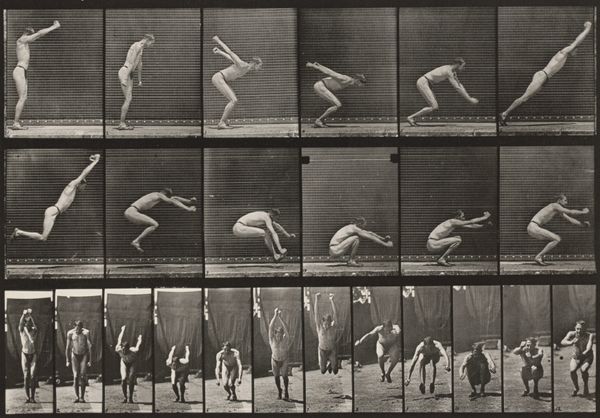
photogram, print, photography
#
action-painting
#
photogram
# print
#
impressionism
#
figuration
#
photography
#
nude
Dimensions: image: 21.2 × 34.15 cm (8 3/8 × 13 7/16 in.) sheet: 47.75 × 60.3 cm (18 13/16 × 23 3/4 in.)
Copyright: National Gallery of Art: CC0 1.0
Eadweard Muybridge created this albumen silver print of an acrobat in the late 19th century. It’s one of many plates from his series *Animal Locomotion*, which sought to capture and analyze movement through stop-motion photography. Beyond its scientific aspirations, this image is also deeply embedded in the social and cultural context of its time. The late 1800s witnessed the rise of modern sports and physical culture, accompanied by new ideas about the body and its capabilities. Muybridge’s photographs tapped into that fascination, offering a novel way to dissect and understand human movement. His work was sponsored by the University of Pennsylvania, reflecting the growing institutional interest in scientific approaches to the study of the human form. The image is both progressive and problematic. While it embraces the potential of technology to expand knowledge, it also reinforces a visual culture that objectifies and dissects the human body. To truly understand Muybridge's work, we can explore the archives of scientific institutions, sports organizations, and visual culture. By engaging with these sources, we can understand the complex interplay between art, science, and society in the late 19th century.
Comments
No comments
Be the first to comment and join the conversation on the ultimate creative platform.


